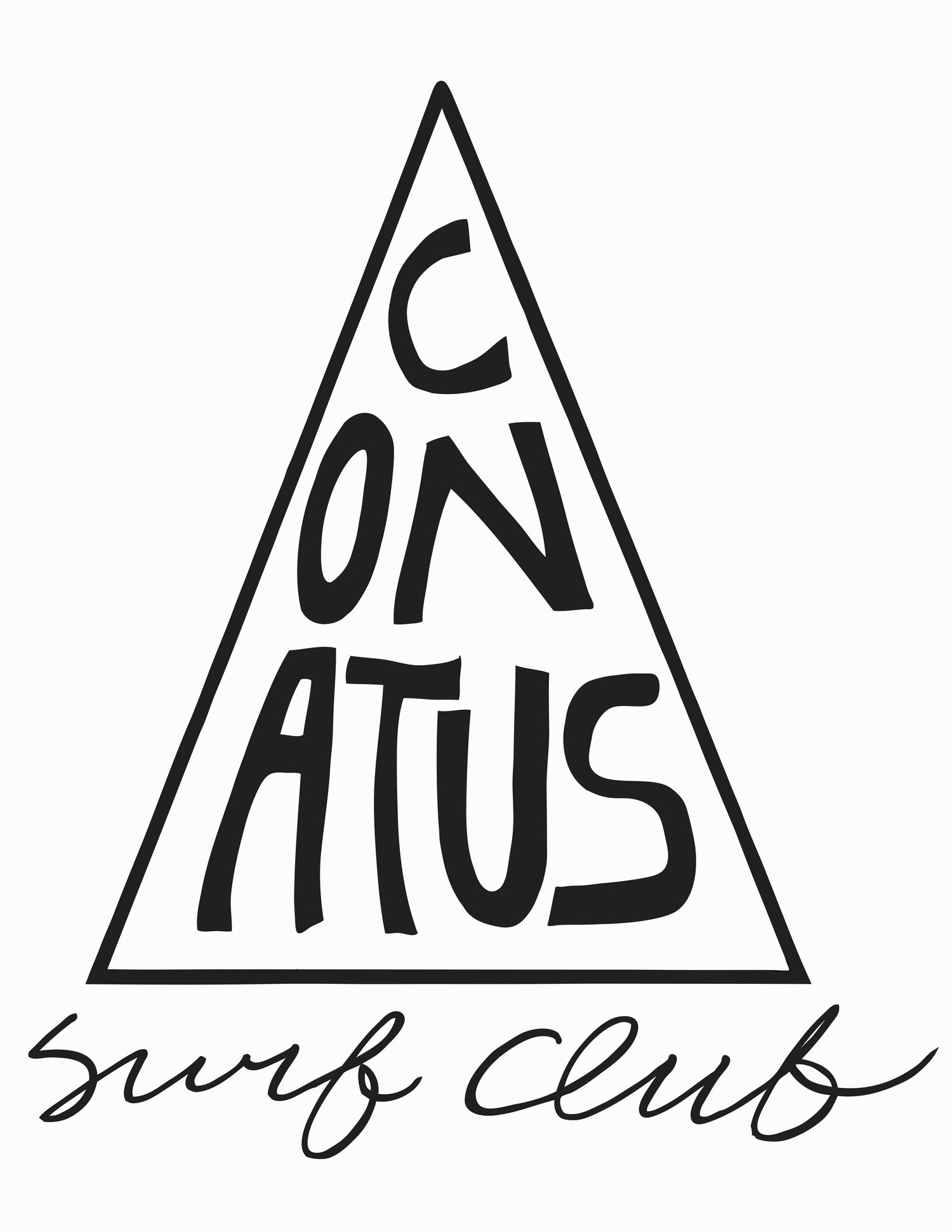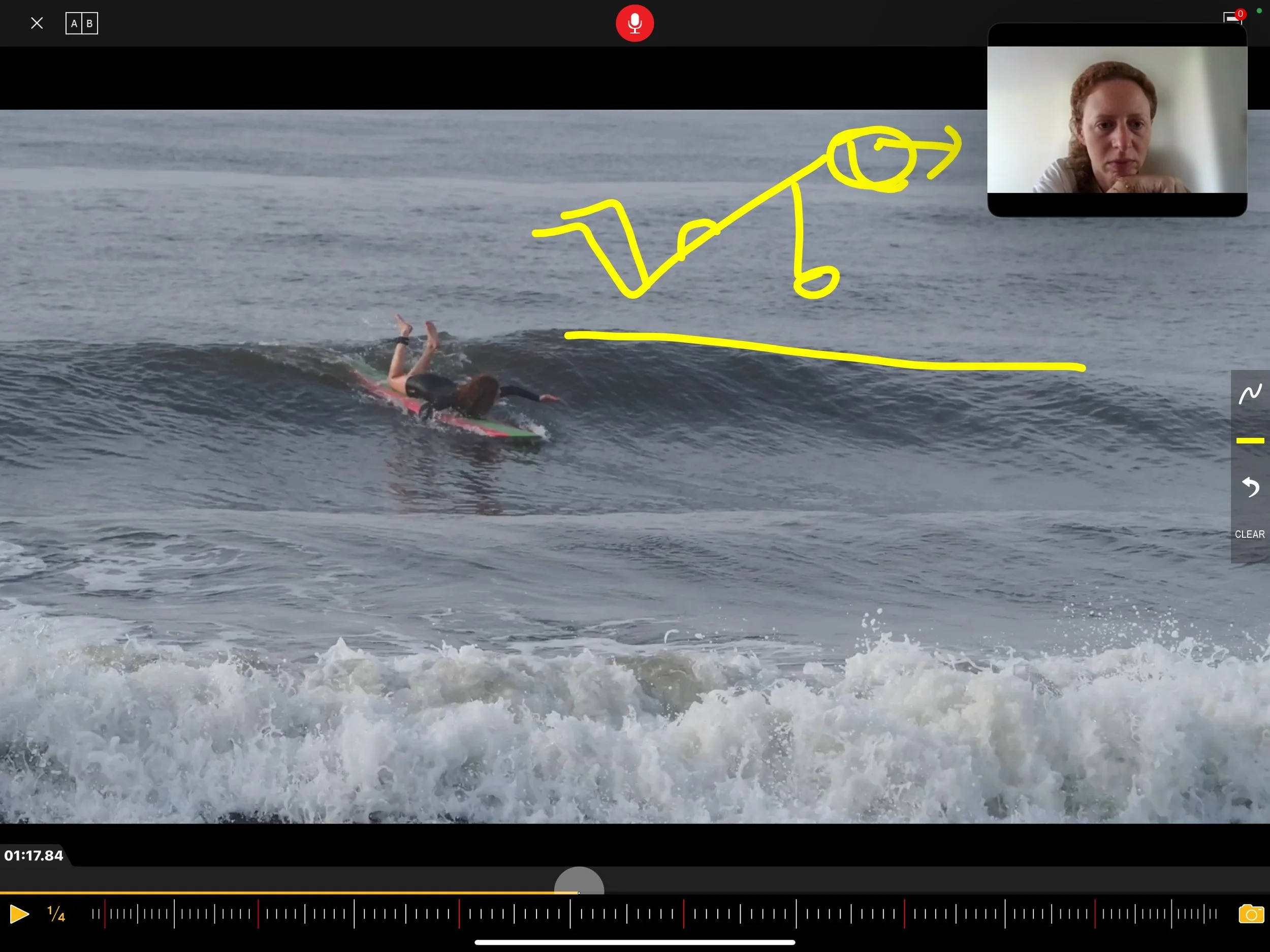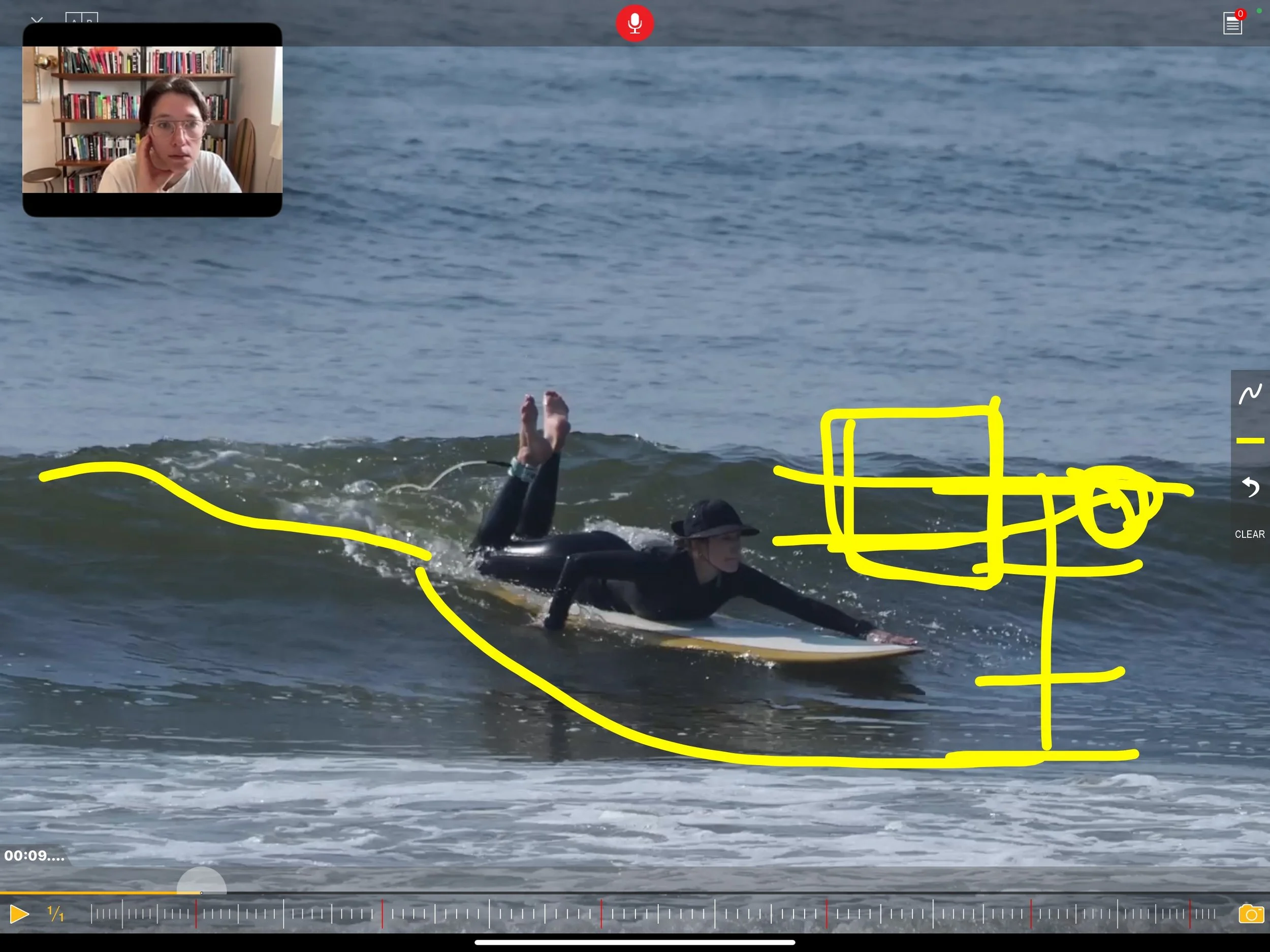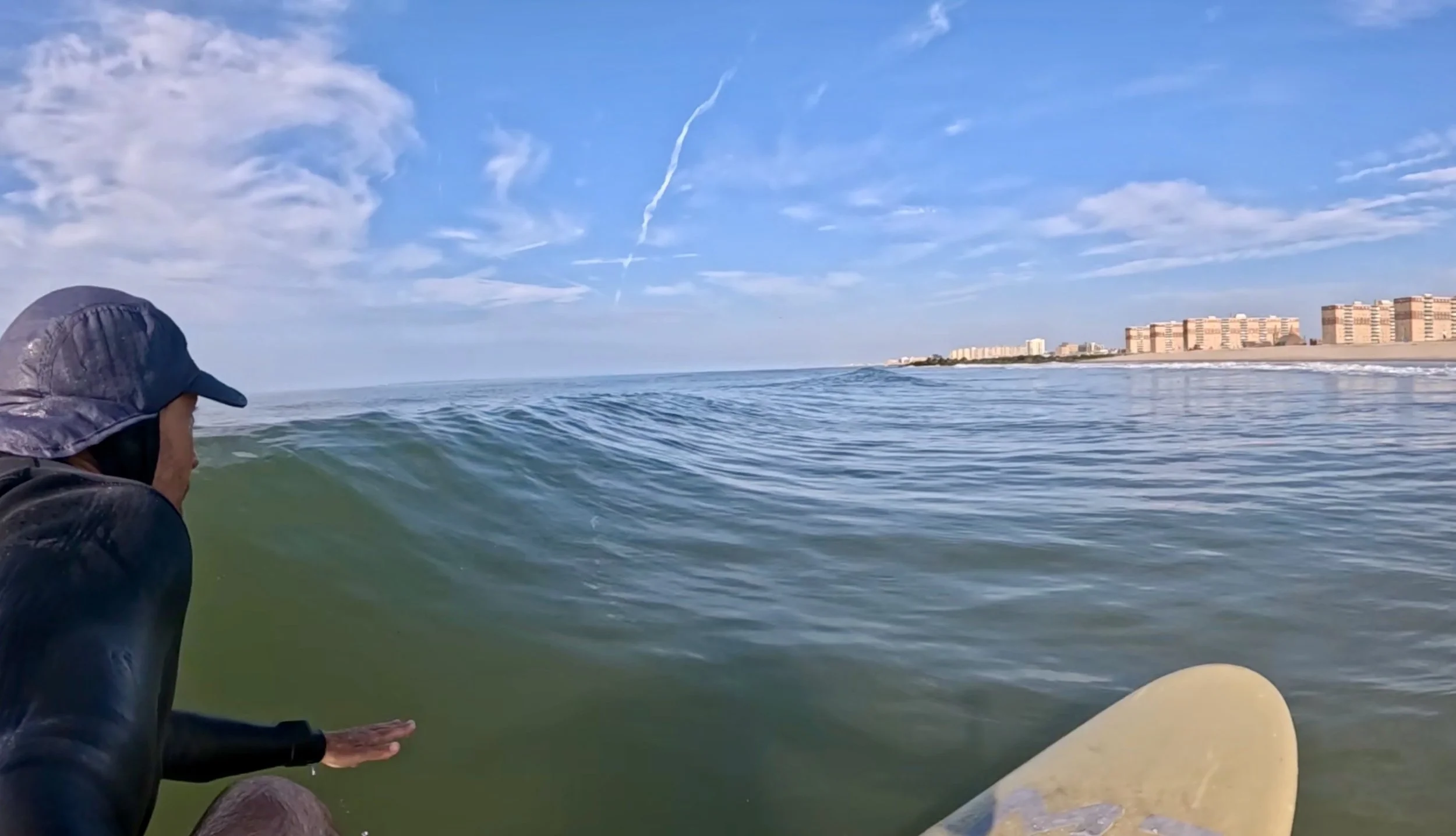After coaching hundreds of frustrated surfers, I can tell you definitively: if you're not catching waves consistently, focusing on your pop-up alone won't fix it. The real problem is that no one taught you how to actually read waves. I've watched countless surfers spend months obsessing over their pop-up technique while completely ignoring wave reading. They'll drill pop-ups endlessly but never address the fundamental timing and positioning that determines whether you'll catch a wave at all. The mechanics of various pop-ups absolutely matter—there can be lots of things wrong with your pop-up that need to be fixed through proper land-based training (preferably through a surf-specific fitness program like SurfReady365). But here's the thing: even perfect pop-up mechanics become useless if you're sitting in the wrong position in the lineup, turning around too early, or missing the wave entirely. Here's what actually happens when you "miss" waves, and why mechanical pop-up drills alone won't solve it.
The Pop-Up Obsession is Missing the Point
Most surf instruction focuses heavily on the pop-up because it's the most visible part of catching a wave. It's dramatic, it's photogenic, and it gives instructors something concrete to teach. Pop-ups absolutely need proper training—ideally through dedicated surf fitness programs that address the specific movement patterns and strength requirements. But this emphasis creates a massive blind spot: even perfect pop-up mechanics become irrelevant if you don't understand wave reading.
A typical surf lesson: drilling pop ups in the sand as if it’s all that surfing is (also her pop up is incorrect — back foot should never come forward first).
Pop-up mechanics are something you can and should drill on land. The decision of when to pop up, how to pop up, or whether to pop up at all—that's determined entirely by what the wave is offering you. The crucial part: there isn't just one pop-up. All good pop-ups are informed by what the wave is offering and the possibilities it's presenting. Sometimes not popping up is the best and most fun option.
Pop up drills at home are better than at the beach. SR365 devotee, Fialka, on location in Costa Rica.
When I work with new clients, I can predict with startling accuracy who's been through traditional surf instruction based on one simple observation: they turn around and start paddling the moment they see any wave approaching, head down, completely losing sight of what the wave is actually doing. This is like trying to merge onto a highway while staring at your speedometer instead of looking at traffic.
What's Really Happening When You "Miss" Waves
You're turning around too early. Most beginning and intermediate surfers see a wave coming and immediately spin their board toward shore. But waves are moving, changing shape, and choosing where they want to break. By the time you're paddling head-down, that wave might be breaking fifty yards to your left.
In my video review sessions we make sure you know what the lip line looks like.
You're not reading the lip line. The lip line—the top edge of the wave as it approaches—tells you everything about timing. When you're looking back over your shoulder at the wave (another classic mistake), you can't see the lip line and you have no way to judge when you've actually entered the wave.
You're paddling in the void. I see this constantly: surfers paddling frantically in open water while the actual wave energy passes underneath them harmlessly. They're chasing the white water instead of positioning themselves where the wave wants to break.
The Real Skills That Determine Wave Catching Success
Here I demonstrate how to get to the peak, time the take off, and pop up with ease. Note my eyes.
Wave catching success comes down to three core skills:
Reading wave direction and speed
Positioning at the peak
Using the lip line to time your takeoff
The good news is these are all learnable techniques rooted in observation and physics—not guesswork or mysticism.
1. Reading Wave Direction and Speed
Waves don't just roll straight toward shore. They have angles, they bend around bathymetry, and they often break in sections. Before you turn around, you need to identify:
Where is this wave going to break first?
Which direction is it traveling down the line?
How fast is it moving relative to your position?
This isn't mystical wave-reading wisdom—it's observable physics that anyone can learn with practice.
2. Positioning Strategy: Getting to the Peak
Most surfers sit in one spot and hope waves come to them. This is like standing in your driveway hoping the bus will change its route. Instead, you need to actively move to where the wave wants to break. I teach my clients a simple protocol: when you see a promising wave set approaching, don't just turn around. First, paddle out or laterally to position yourself near where you predict the peak will be. Then turn around and wait for the wave to come to you.
3. The Lip Line Technique
Eyes are everything! Here Chrissy is not looking up at the top 1/3rd of the wave. Don’t make this mistake! Or schedule a consult to make sure you don’t!
Here's what your eyes should be doing during a proper takeoff sequence:
Note my eyes are looking at the path ahead.
Initial positioning: Eyes scanning the horizon, reading the approaching wave set
Final positioning: Eyes tracking the lip line as you paddle to the predicted peak
Takeoff timing: Eyes focused on the lip line directly above you—when it gets steep and starts to pitch, you're in the wave
Standing up: Eyes immediately shift to look down the line in the direction you want to surf
Notice that "looking back at the wave over your shoulder" appears nowhere in this sequence. That's because it's counterproductive.
Why This Matters More Than Your Pop-Up
I recently had a client who came to me after months of frustration. She'd taken multiple lessons, could pop up flawlessly on the beach, and had even caught a few waves in the white water. But she couldn't consistently catch unbroken waves. We spent our first session ignoring her pop-up entirely. Instead, I taught her to:
Identify which waves in a set were actually worth pursuing
Position herself relative to the peak, not just relative to shore
Wait for the wave to come to her instead of chasing waves that were already past her
Use the lip line to time her paddle, not the white water behind the wave
Result? She caught more waves in that single session than in her previous month of surfing combined. Her pop-up technique hadn't changed at all.
The Confidence Test Every Surfer Should Pass
Here's how you know you actually understand waves: you should be able to catch and ride white water with 100% consistency. Not just sometimes. Every single time. If I ask you, "Can you master riding the whitewater?" you should be able to say with complete confidence: "Absolutely. I love whitewater drills. I can do it every single time. I never pearl. I can find even the tiny green reforms on the worst days." This isn't about being satisfied with riding white water forever. It's about proving to yourself that you understand wave energy, timing, and board control at a fundamental level. These are the same skills you need for unbroken waves—just applied with more precision.
Common Positioning Mistakes That Kill Your Wave Count
Sitting too far outside. Many surfers position themselves where they feel "safe" from the chaos of the inside, but this puts them too far from where most waves actually break. You end up watching waves break in front of you all day.
Sitting too far inside. The opposite extreme—sitting so close to shore that you're only getting the already-broken waves or the tiny reforms that don't have enough energy to carry you.
Following the crowd. Just because there are other surfers in a particular spot doesn't mean it's the right spot for the current conditions. Crowds often accumulate in familiar locations rather than optimal ones.
Ignoring the peak migration. Wave breaks shift throughout a session based on tide, swell direction, and sandbar changes. The spot that was perfect an hour ago might now be completely wrong.
Practical Steps to Fix Your Wave Catching
Start with White Water Mastery
Here student, Sana, works on white water mastery.
Before you worry about catching green waves, become absolutely deadly on white water. Practice until you can:
Catch any piece of white water that has even minimal energy
Ride it without pearling or getting knocked off
Control your speed and direction while riding it
Find and ride the small green sections that often appear even in broken waves
This is your foundation. It's also sustainable practice you can do in terrible conditions when the "real" surfers stay home.
Develop Your Eyes
Spend sessions just watching. Sit in the lineup and observe:
Where do most waves in each set break first?
How do the good surfers position themselves differently from the struggling ones?
What does the lip line look like just before a wave becomes catchable?
How much does the peak location shift between waves?
I often tell my clients to spend their first 20 minutes in any new lineup just observing, not trying to catch anything. This observation period will improve your wave count more than any amount of pop-up practice.
Practice the Turn-Around Timing
Here's a drill: Next session, practice turning around and getting into paddling position, but don't actually paddle for the wave. Just practice the timing of when to spin your board and get ready. You'll quickly discover that most waves require much later positioning than you think.
Why Traditional Surf Instruction Gets This Wrong
The emphasis on pop-ups exists because it's the easiest thing to teach in a traditional lesson format. You can demonstrate it on the beach, students can practice it safely, and there's immediate visual feedback when someone gets it right or wrong. Wave reading, on the other hand, requires time in varying conditions, develops gradually through experience, and can't be easily demonstrated in a single lesson. It's much harder to package into a neat teaching module. But wave reading is what separates surfers who catch waves consistently from those who struggle for years. The pop-up is just the final execution of a process that began with proper positioning and timing.
The Real Path to Consistent Wave Catching
If you're not catching waves consistently, don't neglect the mechanical aspects of your pop-up—get proper surf-specific training to dial in those movement patterns. But more importantly, start studying the waves themselves. Learn to position yourself where the waves want to break, not where you feel comfortable sitting. Use the lip line to time your takeoff, not the white water behind the wave.
Master white water riding until it becomes effortless and automatic. Then apply those same timing and positioning skills to unbroken waves. Your pop-up mechanics might need work, and that work should happen on land through proper training. But your wave reading definitely needs work, and that can only happen in the water.
The beautiful thing about focusing on wave reading first: once you understand how to position yourself and time your entry into waves, your pop-up execution will naturally improve too. When you're catching waves with proper timing and positioning, you have more time and stability to execute whatever response the wave calls for. When you're constantly playing catch-up with poorly-timed takeoffs, even mechanically perfect pop-up technique can't save you. The ocean rewards patience, positioning, and observation far more than athletic ability. Start there, and everything else becomes possible.
For deeper dives into wave reading, pop-up variations, and surf-specific training, make sure you’re subscribed to my Philo-surfy Zine. EVERY FRIDAY I give detailed tips you won’t find anywhere else.




